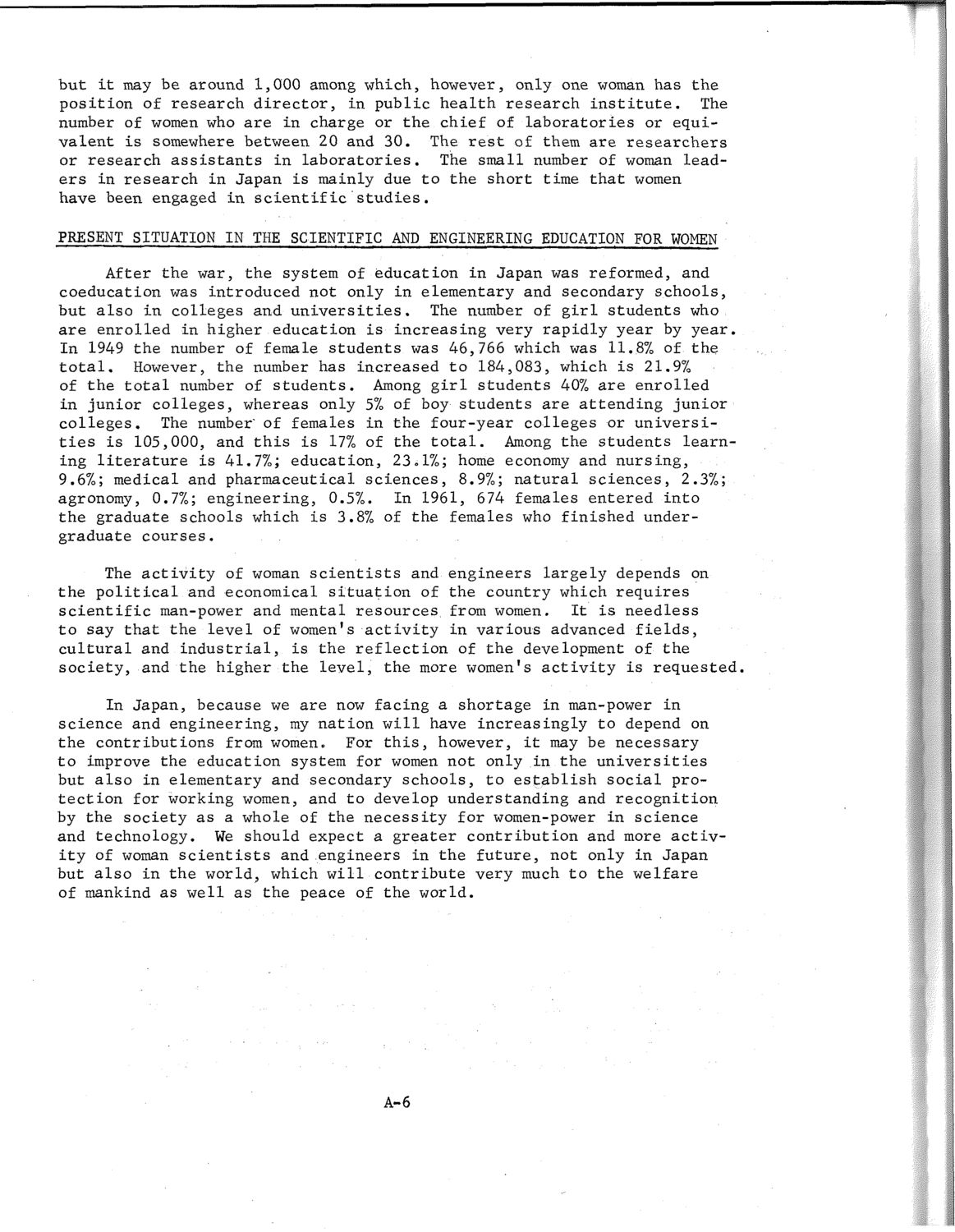| |
| |
Caption: SWE - Proceedings of the First International Conference of Women Engineers and Scientists
This is a reduced-resolution page image for fast online browsing.

EXTRACTED TEXT FROM PAGE:
but it may be around 1,000 among which, however, only one woman has the position of research director, in public health research institute. The number of women who are in charge or the chief of laboratories or equivalent is somewhere between 20 and 30. The rest of them are researchers or research assistants in laboratories. The small number of woman leaders in research in Japan is mainly due to the short time that women have been engaged in scientific studies. PRESENT SITUATION IN THE SCIENTIFIC AND ENGINEERING EDUCATION FOR WOMEN After the war, the system of education in Japan was reformed, and coeducation was introduced not only in elementary and secondary schools, but also in colleges and universities. The number of girl students who are enrolled in higher education is increasing very rapidly year by year. In 1949 the number of female students was 46,766 which was 11..8% of. the total. However, the number has increased to 184,083, which is 21.9% of the total number of students. Among girl students 40%, are enrolled in junior colleges, whereas only 5% of boy students are attending junior colleges. The number' of females in the four-year colleges or universities is 105,000, and this is 17% of the total. Among the students learning literature is 41.7%.; education, 23.1%; home economy and nursing, 9.6%; medical and pharmaceutical sciences, 8.9%; natural sciences, 2.3%; agronomy, 0.7%; engineering, 0.5%. In 1961, 674 females entered into the graduate schools which is 3.8% of the females who finished undergraduate courses. The activity of woman scientists and engineers largely depends on the political and economical situation of the country which requires scientific man-power and mental resources from women. It is needless to say that the level of women's activity in various advanced fields, cultural and industrial, is the reflection of the development of the society, and the higher the level, the more women's activity is requested. In Japan, because we are now facing a shortage in man-power in science and engineering, my nation will have increasingly to depend on the contributions from women. For this, however, it may be necessary to improve the education system for women not only in the universities but also in elementary and secondary schools, to establish social protection for working women, and to develop understanding and recognition by the society as a whole of the necessity for women-power in science and technology. We should expect a greater contribution and more activity of woman scientists and engineers in the future, not only in Japan but also in the world, which will contribute very much to the welfare of mankind as well as the peace of the world. A-6
| |